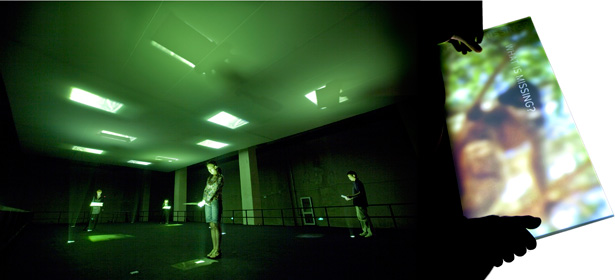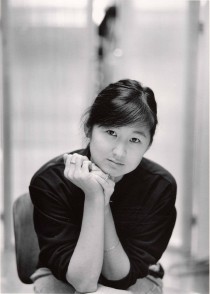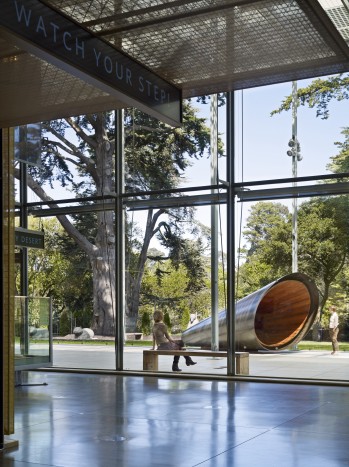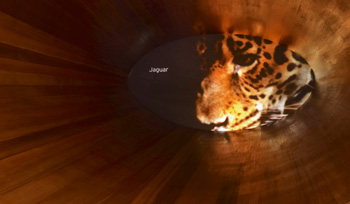OUTREACH

The traveling exhibit The Empty Room opened at the Beijing Center for the Arts in China in September. Detail at right: closeup view of one of the screens carried by visitors on which images are projected.

Maya Lin See larger image
Lab of O helps Maya Lin realize her dream to create arts series on species loss
Two years ago, world-renowned artist Maya Lin, the creator of the Vietnam War Memorial in Washington, D.C., contacted the Cornell Lab of Ornithology's Macaulay Library for help with an ambitious multi-site, multimedia project she was dreaming up.
Ever since, she has been consulting with lab experts and sampling hundreds of audio and video recordings from the Macaulay Library, the world's largest archive of animal sounds and video.
Lin unveiled the first component of her serial art installation "What Is Missing?" in September at the California Academy of Sciences (CAS) in San Francisco. When complete, the project for the San Francisco Arts Commission will feature several separate exhibits -- each will debut individually in different locations -- to raise awareness about extinct and threatened species and the planetary changes behind species going extinct.
The first piece is a permanent sculpture memorial at CAS titled "Listening Cone," a bronze and wood megaphone more than 19 feet long, 10 feet wide and 8 feet tall, where visitors can look into the wide end of the cone to see a screen showing more than 40 short, looped videos featuring endangered and threatened species and their declining habitats.

Maya Lins Listening Cone at the California Academy of Sciences is part of her larger multimedia and multi-site project, What Is Missing? See larger image
One such video, "What Is Missing? The Natural Sound of the Ocean," relied on Cornell bioacoustics researcher Christopher W. Clark's acoustical data "to create a scene that makes people realize how loud the ocean is for any sonar-dependent marine animal," says Lin. Other videos -- with such titles as "Sounds of Songbirds in Our Backyards" and "Rivers Running Freely to the Sea" -- used sounds and moving images of the ivory-billed woodpecker (from 1935), common loons, humpback whales, prairie chickens, sea turtles, pronghorns and coral reefs from Macaulay Library archives.
"We try and put people in touch with sounds, images, facts and experiences that draw them closer to nature, and that's precisely what Maya's vision is -- it's art that is scientifically grounded and a visceral experience of species going extinct," says John Fitzpatrick, director of the Cornell Lab of Ornithology, who consulted with Lin in New York City and at the lab and spoke at the "Listening Cone" dedication at the CAS.
The traveling exhibit "The Empty Room" opened at the Beijing Center for the Arts in China, also in September. It features an empty room with pinholes in the floor that project short, looped videos toward the ceiling. Visitors will carry a thin, clear screen that lights up with images when held above the pinhole.

A video of a jaguar plays inside Listening Cone. See larger image
"'The Empty Room' really speaks to the notion of absence -- that there is nothing physical about this exhibit and that the form is the information; a visitor is able to hold a species in their hands," says Lin.
On Earth Day 2010, a "What Is Missing?" Web site will go live and a five-minute related video will debut on MTV's billboard in Times Square.
Lin's long-term vision for the project is to incorporate the past, present and future into the work. While the "What Is Missing?" exhibits look into the past, Lin plans to develop more works that will focus on the present, "taking you to places where science and environmental groups are working," she says. By 2012, she wants to create a "greenprint for the future," where Cornell, the Wildlife Conservation Society and other groups will help her envision how the world could look by 2050, "so that we can balance our [human] needs with the needs of the rest of the planet."